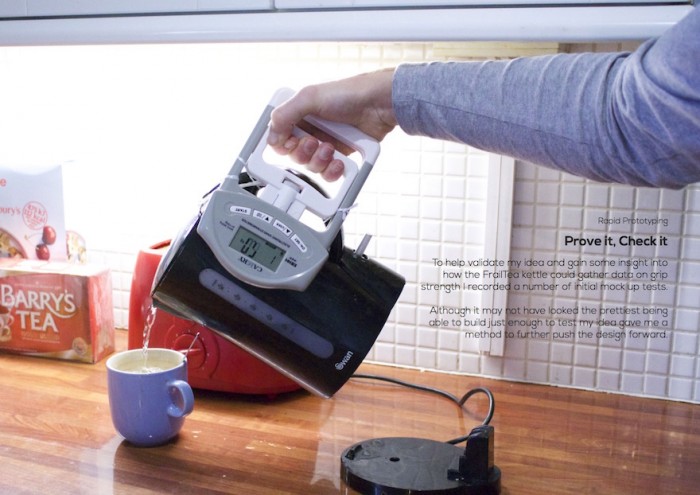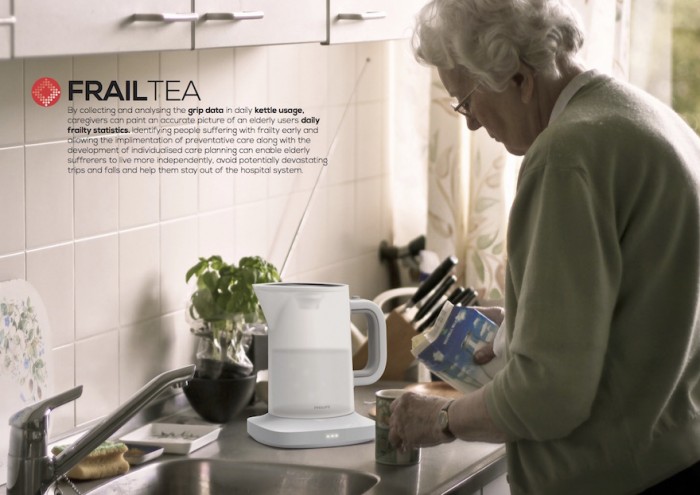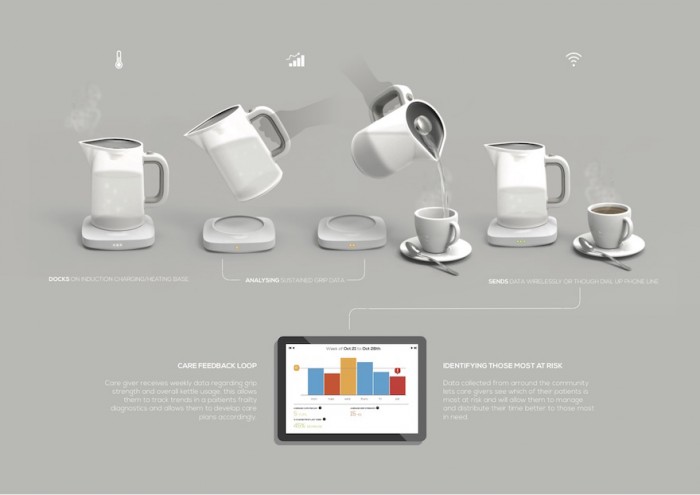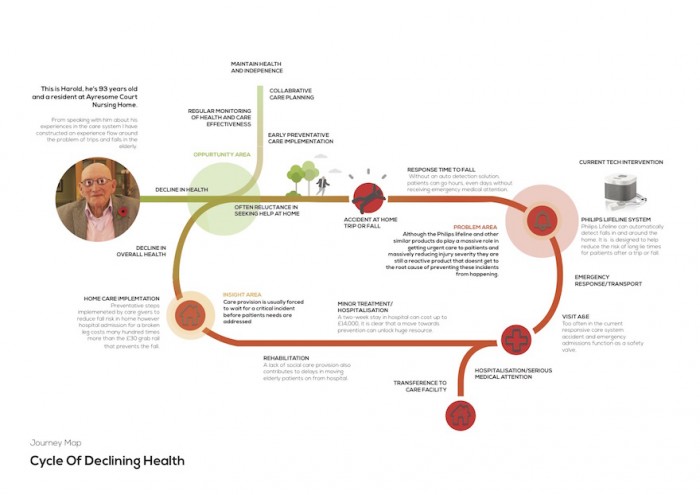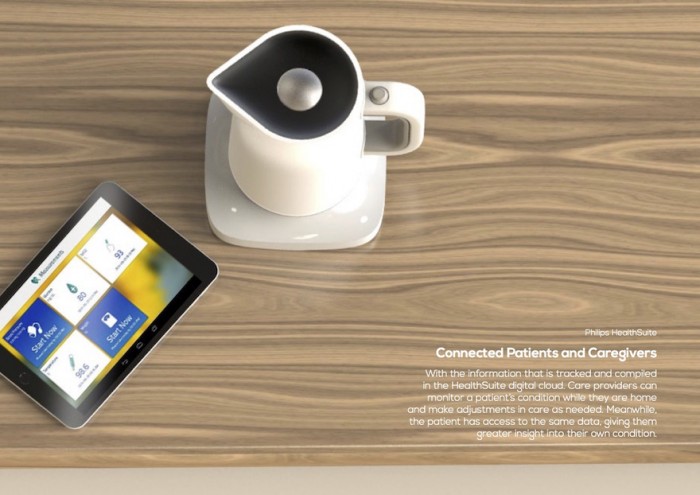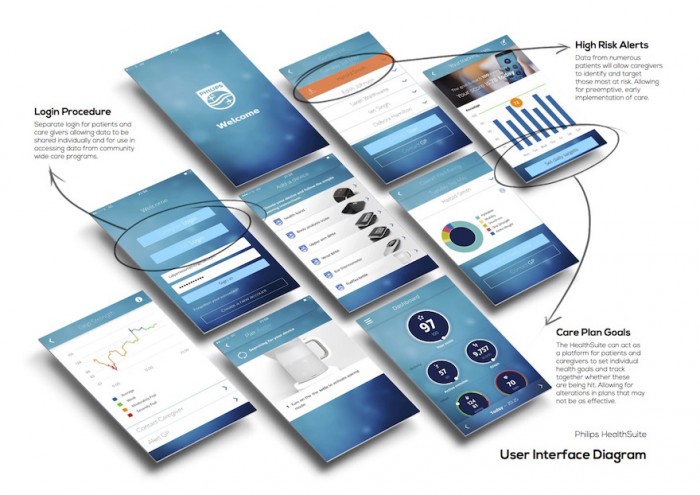From the Series
Northumbria design for industry graduate Callum Smith recently won the RSA Student Design Award for his design FrailTea, a kettle that collects grip data to help monitor the health of the elderly. Early identification of frailty can help tailor care plans and daily grip statistics give an accurate guide to a particular individual’s health status. Smith’s design could help elderly people feel like some of their health is in their own hands.
We chat to Smith about his design project.
Can you explain how FrailTea works?
By collecting and analysing the grip data in daily kettle usage, caregivers can paint an accurate picture of an elderly users daily frailty statistics. Identifying people suffering with frailty early and allowing the implementation of preventative care along with the development of individualised care planning can enable elderly sufferer’s to live more independently, avoid potentially devastating trips and falls and help them stay out of the hospital system.
Caregivers receive weekly data regarding grip strength and overall kettle usage. This allows them to track trends in a patient’s frailty diagnostics and allows them to develop individualised care plans. Data collected from around the community also lets caregivers see which of their patients is most at risk and will allow them to manage and distribute their time better to those most in need.
What inspired it and how did you develop the idea?
I was first inspired by a visit to a local care home where I had the opportunity to talk to some of the residents and develop some insights into what leads to residents being admitted to care homes. I developed a journey map that outlined what I call the cycle of declining health. In the current system, care provision usually has to wait for a critical incident for a patient’s needs to be addressed. The core insight I developed here was that a proactive and pre-emptive approach to elderly care was needed to keep people out of hospital and remain independent for longer.
How do you imagine it integrating into people’s lives?
In my research I found that the connotations of frailty in the elderly can often lead to barriers to patient activism, so patients not taking control of their own condition. How the kettle is integrated seamlessly into home means that it’s almost like a “silent guardian”. Seamless home diagnostics allow users’ body data to be measured whilst remaining discrete enough to not cause any anxiety regarding personal wellbeing.
What does winning an award mean to you?
It’s a fantastic honour to have even been considered by such a prestigious institution as the RSA Student Design awards. I’m hoping to make full use of my fellowship in making the first steps in my career after university.
Do you intend to take this product/idea further?
Philips has expressed an interest in looking to develop the project further, yes.
What is the role of the designer today?
In relation to the RSA’s ethos for design toward social good I feel there’s an ever-growing field for the designer taking a more social, environmental and political focus for their work. Non-profit service design initiatives aimed at solving large humanitarian issues are becoming a more viable career path for young designers.
What inspires you?
Natural Sciences, Marc Newson and old people.
Do you think design for elderly care is an under-serviced sector?
Around a million elderly people in the UK lack basic social care provisions. With a growing ageing population both in the UK and the rest of the world the health services are the ones left to pick up the pieces. While public sector funding continues to shrink the design of effective preventative care models for older people is vital in keeping their independence and quality of life better for longer. FrailTea fits into this space by allowing care workers to quickly and easily identify those people in the community who are most at risk and effectively implement preventative care, keeping them out of the ever more-strained hospital system.
What are your three biggest learnings from your design studies?
Always ask “why?” If you can’t identify what the benefits are and for who then it’s not worth doing.
Fail fast and often. Making mistakes and learning from them early on in the design process will allow you to be more productive moving forward in developing a more well rounded final solution.
Talk to people. Getting first hand research from the target market you’re designing for is invaluable, not all the answers are on the first page of a Google search.


